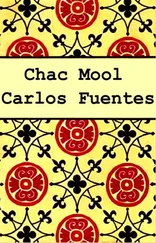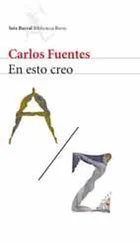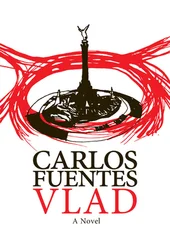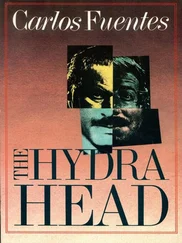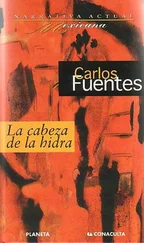Your fancy provoked the laughter of your companions; but soon everyone could see that this fantasy revealed a truth: the painting had been painted on top of another; it was difficult to see with the naked eye because both paintings, the original and the one that was superimposed, were very old, and their materials were very similar. You all discussed whether it could be a pentimento; you imagined an aged and remorseful painter who, lacking materials, used the same canvas to cover up a failure and at the same time create another more perfect work. Someone said that perhaps it was a painting in which the outer stratum had tended to separate from the preparatory stratum. Another said that doubtlessly it was an abortive sketch, and the painter had let too much time pass between the preparatory and the final phases.
You X-rayed the canvas, but the results were very confusing. Colors least penetrable by X-ray were predominant in the painting: lead white, vermilion, and lead yellow. The negative barely suggested differentiations among the hidden images: like a succession of ghosts superimposed one upon the other, the figures reflected several times their own specters, the paint was thick, very old, perhaps what you were seeing was merely a faithful rendering of the original, a past restoration, a swarm of artistic repentances, a simple transposition of colors. You asked permission to make one final test: to resort to an infinitesimally small section made with your artist’s knife; the painting had already been badly treated, it would be sufficient to lift off a tiny fragment that had cracked by itself, treat it with resin and balsam on a glass slide, and examine it under the microscope to see whether between the layers of color there appeared a subtle film of dirt or yellowed varnish. Your test was successful: the color revealed was not the original color of the painting; an intangible line of time separated the two.
With increasing excitement, but also with great caution, your crew cleaned the painting. You applied solvents to its surface, dividing it into small rectangular zones, scraping away with your knives plaster, fungus, tenacious crusts, and little by little the stripped, false skin of the oil painting peeled away, and little by little, no more than thirty centimeters a day, the oils applied with enormous care, the drops of ammonia, alcohol, turpentine, there appeared before the astonished eyes of your small group of artists the original form of the painting.
It was a strange and vast portrait of a court. It could only be a court of Spain, and not one court, but all courts, centuries reunited in a single gallery of gray stone, beneath an arch of stormy shadows. In the foreground, a kneeling King with an air of intense melancholy, a breviary in his hands, a fine hound lying by his side, a King dressed in mourning, his face marked by repressed sensuality, a fine ascetic profile, thick, drooping lips, noticeable prognathism, self-absorbed but inquiring eyes, thin, silky hair and beard; and forming a circle with the King, two additional figures: a Queen in sumptuous attire, elaborate hoopskirts and belled farthingales, a high ruff, a hawk perched on her wrist — never had you seen in eyes so blue, in skin so fair, an expression of such vulnerable strength and cruel compassion; and a man dressed as a chief huntsman, one hand resting upon the hilt of his blade, a hooded falcon on his shoulder, the other hand forcefully restraining a pack of mastiffs. To the left and rear, a funeral procession trooped onto the canvas; it was led by an old and mutilated woman wrapped in black rags, armless and legless, a yellow-eyed bundle pushed on a little cart by a toothless and chubby-cheeked dwarf draped in clothing too generous for her stature; behind them came a page-and-drummer dressed all in black, with submissive gray eyes and tattooed lips; and behind the drummer, a sumptuous, wheeled coffin and a vast company of mayors, alguaciles, stewards, secretaries, ladies-in-waiting, workmen, beggars, halberdiers, captive Hebrews and Moslems accompanying an endless row of funeral carriages that disappeared into the background of the painting, and also surrounded by bishops, deacons, chaplains, and chapters of all the orders. On the right side of the painting, as if watching the spectacle, crouched a flautist, a beggar with olive skin and protruding green eyes, and behind him a huge monster floated in a sea of fire, a cross between a shark and a hyena, whose gaping mouth devoured human bodies. And in the very center of the painting, behind the circle presided over by the black figure of the kneeling King, in the space formerly occupied by the naked men, a trio of young men, also naked, their arms entwined, their backs to the viewer; on each back was stamped the sign of a cross, a blood-red cross. And beyond this plane, deeper and deeper in the perspective of gray stone and black shadow, a group of half-naked nuns lashed themselves with penitential cilices; and one of them, the most beautiful, held broken glass in her mouth, and her lips were bleeding; processions of hooded monks with tall lighted tapers; in a high tower a red-haired monk observed the impenetrable sky; in a similar tower a one-armed scribe bent over an ancient parchment; an equestrian statue of a Comendador; a plain of tortures: smoking stakes, racks, men twisted with pain, pilloried; scenes of battle and throat slashing; minute details: broken mirrors, mandrakes emerging from the burned earth beneath funeral pyres, half-consumed candles, plague-infested cities, a masked nun with a bird’s beak, a distant beach, a half-constructed boat, an ancient sailor with a hammer in his hand, a flight of crows, fading into the boundaries of the canvas a double row of royal sepulchers, jasper tombs, recumbent statues, mere sketches, an infinite succession of deaths, vertiginous attraction toward the infinite; increasing darkness in the background, dazzling chromatic symphony in the foreground: blue, white, golden yellow, vivid red, and orange red.
Of the three youths writhing and twisting in their mutual embrace like Laocoön in his battle with the serpents, only one showed his face. And that face was yours.
The painting had no date, although it was signed: Julianus, Pictoret Frater, Fecit.
Like you, everyone was at first astonished to see you depicted in a portrait painted four, five, six centuries earlier … There was discussion of coincidences, then everyone joked about it and left the church to eat with the white-clad Indians beneath an enormous sun beating down upon the sick land of the Cora people.
“Silence will never be absolute.” This you say to yourself as you listen to her. “Forlornness, yes, possibly; suspected nakedness, that too; darkness, certainly…”
This she says as you try to drag her toward the hut; she says it, but she says it with your voice. Black scale falls from her eyelids. The whites of her eyes are shot with green veins. Her eyes gyrate in their sockets like two captive moons: her white veil has fallen away.
“But either the isolation of the place or that of forever embraced figures [she says to you, señor caballero] seems to convoke that reunion of sound [the drum; squeaking carriage wheels; horses; the solemn chant, luminis claritatem; the panting of the woman; the distant bursting of waves upon the coast where you awoke this morning, again in another land as unknown as your name] which in the apparent silence [as if it was taking advantage of the exhaustion of your own defenses] builds layer upon layer of its most tenacious, keenest, most resounding insinuations…”
Ants swarm across the livid face of the Old Woman lying on her back in the dust of the garden.
You can say nothing; her wrinkled lips silence yours, and as she kisses you, without wishing it you speak what she says in the name of what she, her body resting upon yours, convokes. Like her, you are inertia transformed into a conduit for energy; you were found along the road; you had a different destiny; she separates her lips from yours and her hands stroke your features, they seem to be drawing, tracing, a second face upon yours. Her fingers are heavy and rough. They seem to hold colors and stones they arrange upon your features, as your former face disappears with every stroke of her fingertips. The fingernails scrape against your teeth as if filing them. Dry palms pass through your hair, as if spreading a blondish, reddish dye, and as they touch your cheeks, those hands create a beard light as plumage. Her fingers work upon your former skin.
Читать дальше

